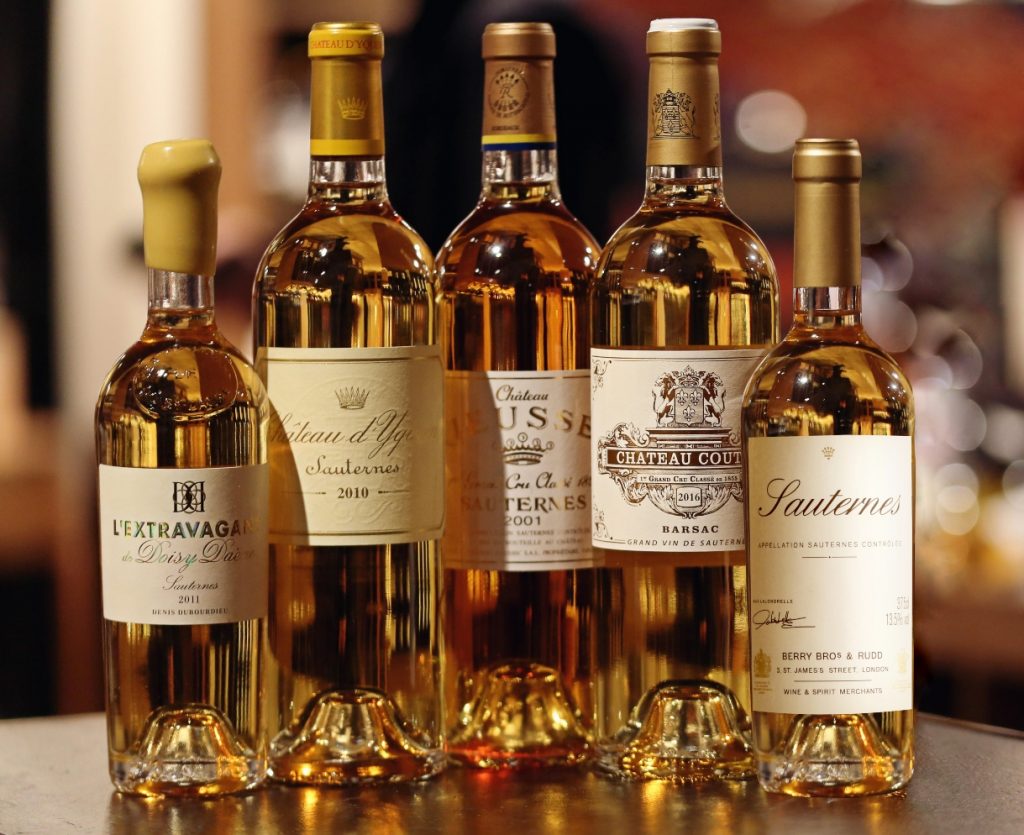In defence of Sauternes
Author: Clara Bouffard

Sauternes and the other sweet wines of Bordeaux are all too often overlooked, says Clara Bouffard. Having grown up in the region, she’d like that to change.
I grew up in the Bordeaux region. At home, local white and sweet wines were every bit as common as reds. Only when I started travelling did I realise that Bordeaux had a reputation for red wine above all else. It took me a while to adjust to it being reduced to “Claret” in some circumstances, but I’ve made my peace with that. With that said, I wanted to shed some light on a style of Bordeaux wine that many of us love, but rarely drink – sweet whites. More specifically, Sauternes.
An ideal terroir
If you’ve ever visited Sauternes during harvest, you’re lucky. You’ll have experienced the mystical atmosphere and unique climate that nature brings about at that time of the year. If you haven’t, allow me to paint a picture for you: at night, the cold waters of the Ciron river meet the warmer waters of the Garonne. Until midday, a deep fog settles on the land and – more importantly – the vines. This fog brings with it the ideal conditions for Botrytis Cinerea – the so-called “noble rot” – to settle on the grapes, making micro-perforations to the skin. In the afternoon, wind and sun cause the water in the grapes to evaporate, concentrating both the sugars and aromatics within.
The soil also plays an important part in the process: most typically in Sauternes, you’ll find a blend of sand and gravel. The former allows great drainage through the soil, keeping the roots cool; this is important for acidity. The latter absorbs the sun’s heat, helping to warm the vineyard up after those humid mornings.
It’s fascinating how all these natural phenomena come together, in such a small and specific area, to produce such a wine. However, producers in Sauternes also have numerous challenges to face.
What it takes to make Sauternes
In Inside Bordeaux, Jane Anson says that Sauternes is “made by masochists, drunk by hedonists”. Take it from a sweet-winemaker’s daughter: this couldn’t be more accurate. Every time I drink Sauternes, I can’t help but feel grateful to taste such a noble product. Winemakers face nothing short of a battle to produce a bottle of Sauternes. I believe there are three major factors that make sweet wine production especially challenging.
Climate
First of all, this is Bordeaux: there’s frost, drought, water excess and vine illness to contend with. If that weren’t enough, Sauternes producers also heavily rely on the humid and warm weather variations described already; sometimes, they simply don’t occur and concentration doesn’t happen. This can result in châteaux having very low production, or even not making anything at all in some vintages.
Harvest
Concentration is a gradual process, and botrytized grapes don’t all ripen at once. Harvest here needs to happen in several stages. Known as tris, these multiple passes through the vineyard ensure that only ripe grapes are picked. A single vine might be picked up to six times. Because mechanization isn’t sophisticated enough, all of this must be done by hand. Harvesting sweet wine, therefore, takes a lot longer, and the workforce is a lot more expensive than for dry wine.
Yields
The general rule is that one vine produces one bottle of red or white wine. In Sauternes, an average vine produces just one glass. Because most of the water found in the grapes evaporates, the winemaker is left with one-quarter of what would have made a dry wine.
The price of liquid gold
Put all of that together, and it becomes clear that making sweet wine in Bordeaux becomes a very costly exercise. On the other hand, sweet Bordeaux is both undervalued and underpriced. A bottle (or half-bottle) of Sauternes or Barsac offers some of the best value for money in all of Bordeaux. And that’s not even getting into the lesser-known sweet appellations, like Cérons, Cadillac or Loupiac.
Demand has considerably shrunk for these golden sweet wines, leaving the area’s 500-plus producers having to adapt one way or another. Some are switching to dry white wine production or, sadly, uprooting part of their plantings. Others are innovating and looking for new ways to revitalise the appetite the world once had for these sweet delights. The village of Sauternes itself has become an unlikely tourist hotspot, with several luxury hotels popping up in recent years.
A Sauternes to try
Our consumption habits have changed, too. There are many ways to drink and pair sweet wines – not just with dessert or cheese. That’s perhaps a subject for another time. But if you are unsure where to start, I would recommend that you try Berry Bros. & Rudd Sauternes made by Ch. Climens in Barsac.
The sweetness is perfectly balanced by just the right amount of acidity, typical of Barsac wines. There are aromas of orange blossom, lime and toast on the nose, along with complex notes of pear and fresh tropical fruits. It’s a beautiful wine in its youth, especially if paired with a mature Comté. It will age beautifully, too.


